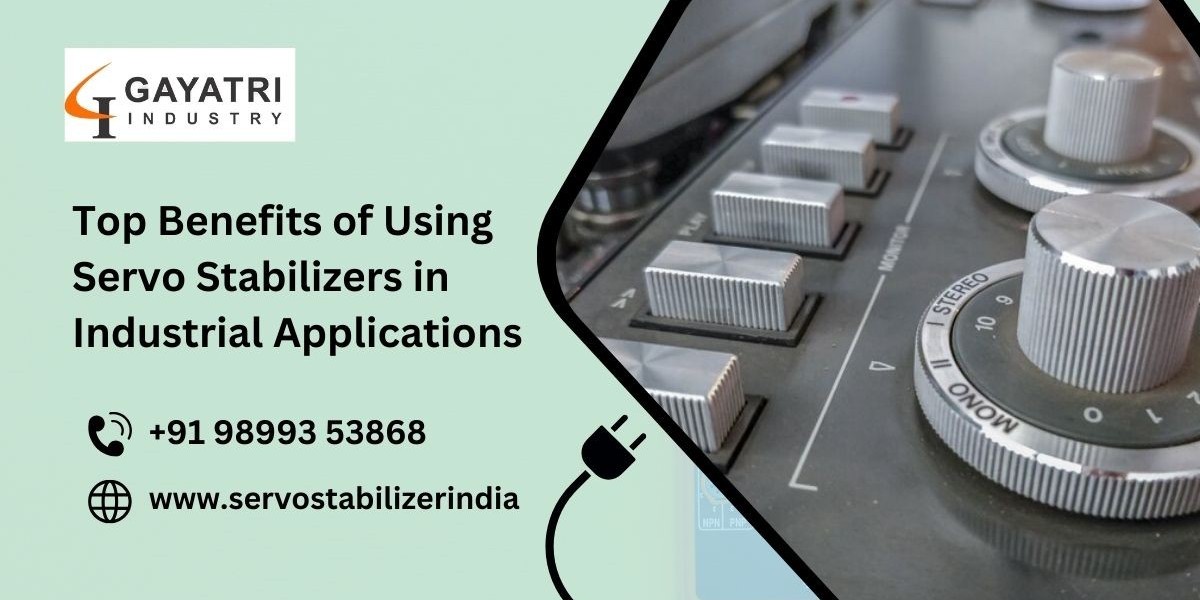In the industrial sector, maintaining consistent voltage levels is crucial for the efficient operation of machinery and equipment. Variations in voltage can cause equipment to malfunction, have a shorter lifespan, and require more maintenance. This is the application for servo stabilizers, which are also referred to as servo voltage stabilizer. These devices are designed to provide stable voltage output by correcting voltage fluctuations, ensuring that industrial equipment operates smoothly and efficiently.
What is a Servo Stabilizer?
A servo stabilizer is an advanced electronic device that automatically regulates and stabilizes the voltage output to ensure that the connected equipment receives a constant voltage supply. It works on the principle of a servo motor, which adjusts the voltage by controlling the movement of a motorized variable transformer. This adjustment ensures that any deviation from the desired voltage level is corrected, providing a stable output.
Key Components of a Servo Stabilizer
Servo Motor: Adjusts the position of the variable transformer.
Variable Transformer: Regulates the output voltage.
Control Circuit: Monitors the input voltage and controls the servo motor.
Buck-Boost Transformer: Helps in increasing or decreasing the voltage as needed.
Top Benefits of Using Servo Stabilizers in Industrial Applications
1. Protection Against Voltage Fluctuations
Voltage fluctuations are common in industrial areas due to the high demand for power. These fluctuations can cause significant damage to sensitive equipment. Servo stabilizer manufacturers protect against such fluctuations by ensuring a constant voltage supply, thereby safeguarding equipment from potential damage.
2. Enhanced Equipment Lifespan
Industrial equipment is often a substantial investment. Voltage fluctuations can lead to overheating, excessive wear and tear, and eventual failure of components. By providing a stable voltage, servo voltage stabilizers reduce the strain on equipment, enhancing its lifespan and reducing the frequency of repairs and replacements.
3. Improved Operational Efficiency
Stable voltage levels are essential for the optimal performance of industrial machinery. Servo stabilizers ensure that equipment operates at its designed voltage, leading to improved efficiency and productivity. This stability translates to better performance and higher output.
4. Energy Savings
Servo stabilizers help in reducing energy consumption by maintaining optimal voltage levels. Overvoltage can lead to excessive energy use, while undervoltage can cause equipment to draw more current to operate effectively. By providing a consistent voltage supply, servo stabilizers contribute to energy savings and lower electricity bills.
5. Reduced Downtime
Unexpected equipment failures due to voltage issues can lead to significant downtime, affecting production schedules and leading to financial losses. Servo stabilizers minimize the risk of such failures, ensuring continuous operation and reducing downtime.
6. Protection of Sensitive Equipment
Industries often use sensitive equipment that requires precise voltage levels to function correctly. Servo voltage stabilizers provide the necessary voltage accuracy, protecting sensitive equipment such as CNC machines, medical devices, and laboratory instruments from damage caused by voltage variations.
7. Customization and Flexibility
Servo stabilizer manufacturers offer customized solutions to meet the specific needs of different industries. Whether it's for heavy machinery, lighting systems, or specialized equipment, servo stabilizers can be tailored to provide the required voltage stability, ensuring compatibility and optimal performance.
8. Cost-Effective Solution
Investing in a servo stabilizer can lead to significant cost savings in the long run. By protecting equipment from voltage-related damage, reducing energy consumption, and minimizing downtime, servo stabilizers help industries save on maintenance and operational costs.
How Servo Stabilizers Work
Step-by-Step Operation
Voltage Sensing: The control circuit continuously monitors the input voltage.
Error Detection: Any deviation from the desired voltage level is detected by the control circuit.
Correction Mechanism: The control circuit signals the servo motor to adjust the position of the variable transformer.
Voltage Adjustment: The variable transformer adjusts the voltage output, either increasing or decreasing it as needed.
Stable Output: The buck-boost transformer ensures that the adjusted voltage is provided to the connected equipment.
Types of Servo Stabilizers
Single-Phase Servo Stabilizers: Used for equipment operating on single-phase power supply.
Three-Phase Servo Stabilizers: Used for equipment operating on three-phase power supply, common in industrial settings.
Choosing the Right Servo Stabilizer Manufacturer
Key Considerations
Reputation and Experience: Look for manufacturers with a proven track record and extensive experience in the industry.
Standards of Quality: Verify if the manufacturer complies with international certifications and standards of quality.
Customization Options: Choose manufacturers that offer customized solutions tailored to your specific needs.
After-Sales Support: Reliable after-sales support and maintenance services are crucial for the long-term performance of the stabilizer.
Cost and Warranty: Consider the cost-effectiveness of the stabilizer and the warranty offered by the manufacturer.
Leading Servo Stabilizer Manufacturers
ABC Power Systems: Known for their high-quality and reliable servo stabilizers.
XYZ Industries: Offers a wide range of servo voltage stabilizers with advanced features.
LMN Electricals: Provides customized solutions and excellent after-sales support.
Conclusion:
Servo stabilizers play a vital role in ensuring the smooth and efficient operation of industrial equipment by providing stable voltage output. They offer numerous benefits, including protection against voltage fluctuations, enhanced equipment lifespan, improved operational efficiency, energy savings, reduced downtime, and cost-effectiveness. When choosing a servo stabilizer it is essential to consider factors such as the reputation of the manufacturer, quality standards, customization options, after-sales support, and cost. By investing in a high-quality servo stabilizer, industries can protect their valuable equipment, optimize performance, and achieve significant cost savings.
Frequently Asked Question (FAQs)
A servo stabilizer: what is it?
An electrical device known as a servo stabilizer automatically adjusts and stabilizes voltage levels to make sure that connected equipment has a steady and reliable voltage supply. It functions by repositioning a variable transformer using a servo motor.
What distinguishes a servo stabilizer from other kinds of voltage stabilizers?
Servo stabilizers provide exact control and accuracy by adjusting the voltage using a servo motor. Other kinds control voltage with electronic circuits, like static stabilizers. Because of its excellent precision and dependability, servo stabilizers are appropriate for delicate and important applications.
Can significant voltage variations be handled by a servo stabilizer?
Yes, even in situations when the input voltage varies greatly, servo stabilizers are built to withstand large voltage swings and can keep the output steady. They are perfect for industrial settings where there is frequently voltage volatility.








